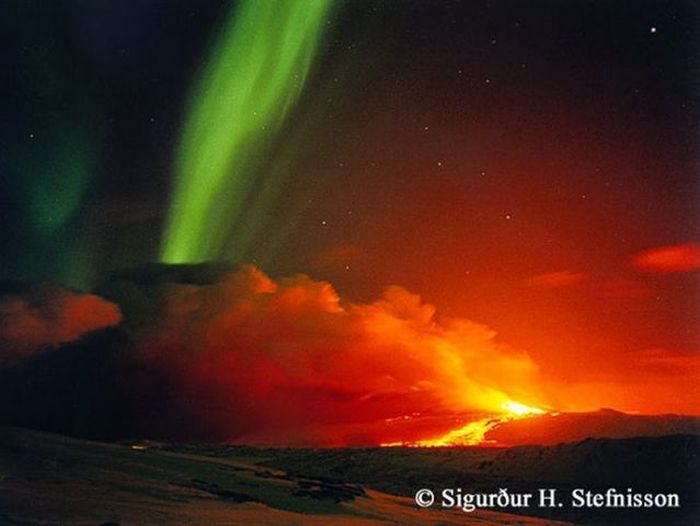|
|
Aurora, Amazing Northern Lights
|
Origin
The ultimate energy source of the aurora is the solar wind flowing past the Earth. The magnetosphere and solar wind consist of plasma (ionized gas), which conducts electricity. It is well known (since Michael Faraday's (1791 – 1867) work around 1830) that when an electrical conductor is placed within a magnetic field while relative motion occurs in a direction that the conductor cuts across (or is cut by), rather than along, the lines of the magnetic field, an electric current is said to be induced into that conductor and electrons will flow within it. The amount of current flow is dependent upon a) the rate of relative motion, b) the strength of the magnetic field, c) the number of conductors ganged together and d) the distance between the conductor and the magnetic field, while the direction of flow is dependent upon the direction of relative motion. Dynamos make use of this basic process ("the dynamo effect"), any and all conductors, solid or otherwise are so affected including plasmas or other fluids.
In particular the solar wind and the magnetosphere are two electrically conducting fluids with such relative motion and should be able (in principle) to generate electric currents by "dynamo action", in the process also extracting energy from the flow of the solar wind. The process is hampered by the fact that plasmas conduct easily along magnetic field lines, but not so easily perpendicular to them. So it is important that a temporary magnetic connection be established between the field lines of the solar wind and those of the magnetosphere, by a process known as magnetic reconnection. It happens most easily with a southward slant of interplanetary field lines, because then field lines north of Earth approximately match the direction of field lines near the north magnetic pole (namely, into Earth), and similarly near the south magnetic pole. Indeed, active auroras (and related "substorms") are much more likely at such times. Electric currents originating in such way apparently give auroral electrons their energy. The magnetospheric plasma has an abundance of electrons: some are magnetically trapped, some reside in the magnetotail, and some exist in the upward extension of the ionosphere, which may extend (with diminishing density) some 25,000 km around Earth.
Bright auroras are generally associated with Birkeland currents (Schield et al., 1969; Zmuda and Armstrong, 1973) which flow down into the ionosphere on one side of the pole and out on the other. In between, some of the current connects directly through the ionospheric E layer (125 km); the rest ("region 2") detours, leaving again through field lines closer to the equator and closing through the "partial ring current" carried by magnetically trapped plasma. The ionosphere is an ohmic conductor, so such currents require a driving voltage, which some dynamo mechanism can supply. Electric field probes in orbit above the polar cap suggest voltages of the order of 40,000 volts, rising up to more than 200,000 volts during intense magnetic storms.
|
|









